Blog
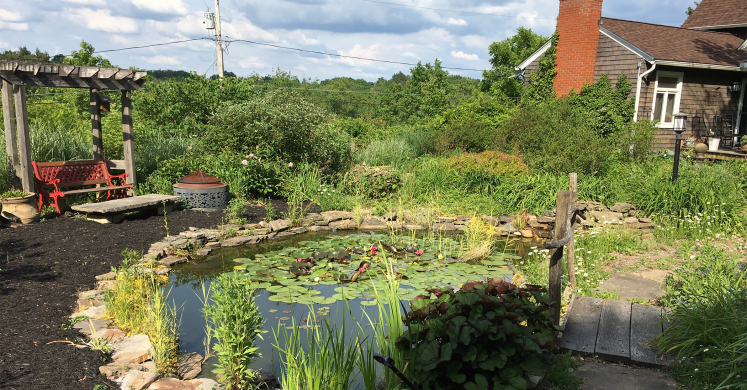
Small Gardens, Big Impact: Rainwater Garden for Wildlife
As the growing season comes to a close, we will be highlighting gardens of Western Pennsylvania that inspire us with their beauty and their positive impact on the environment.
Debbie Stember’s garden manages rainwater runoff. It does so by having depressions where water moving downhill (and from the downspouts of two homes) is slowed and collected instead of rushing to the nearby road and into rainwater sewers. The first depression is a pond which is also a main focal point of the garden. There is a bench there and space for people to gather and enjoy the plants and wildlife. The pond has two overflow points where water can continue to move through the landscape either into a rain garden growing along a pathway or a series of swales running along the hillside down to the road. The rain garden contains tough plants which don’t mind getting their feet wet and also tolerate periods of dry spells.
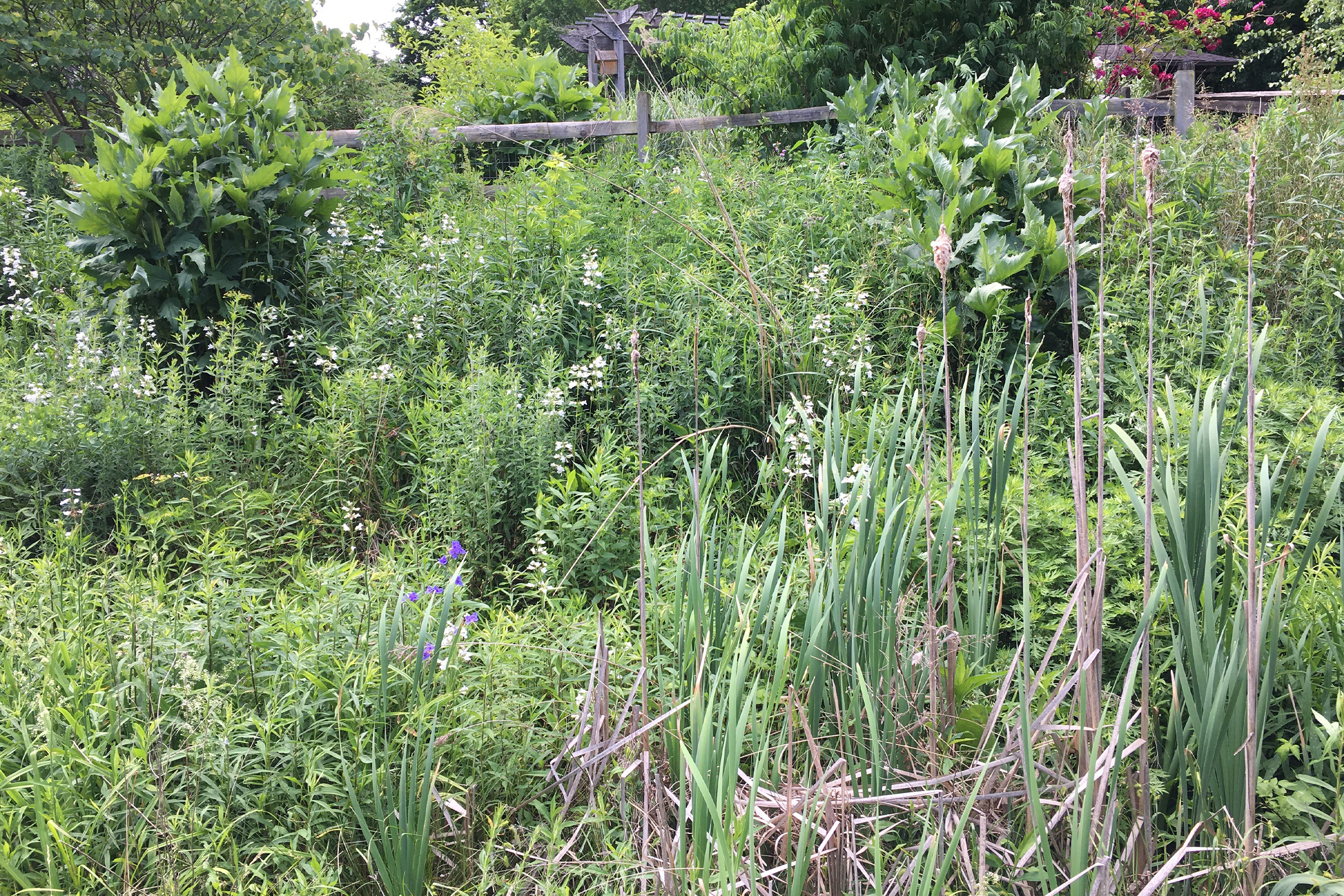
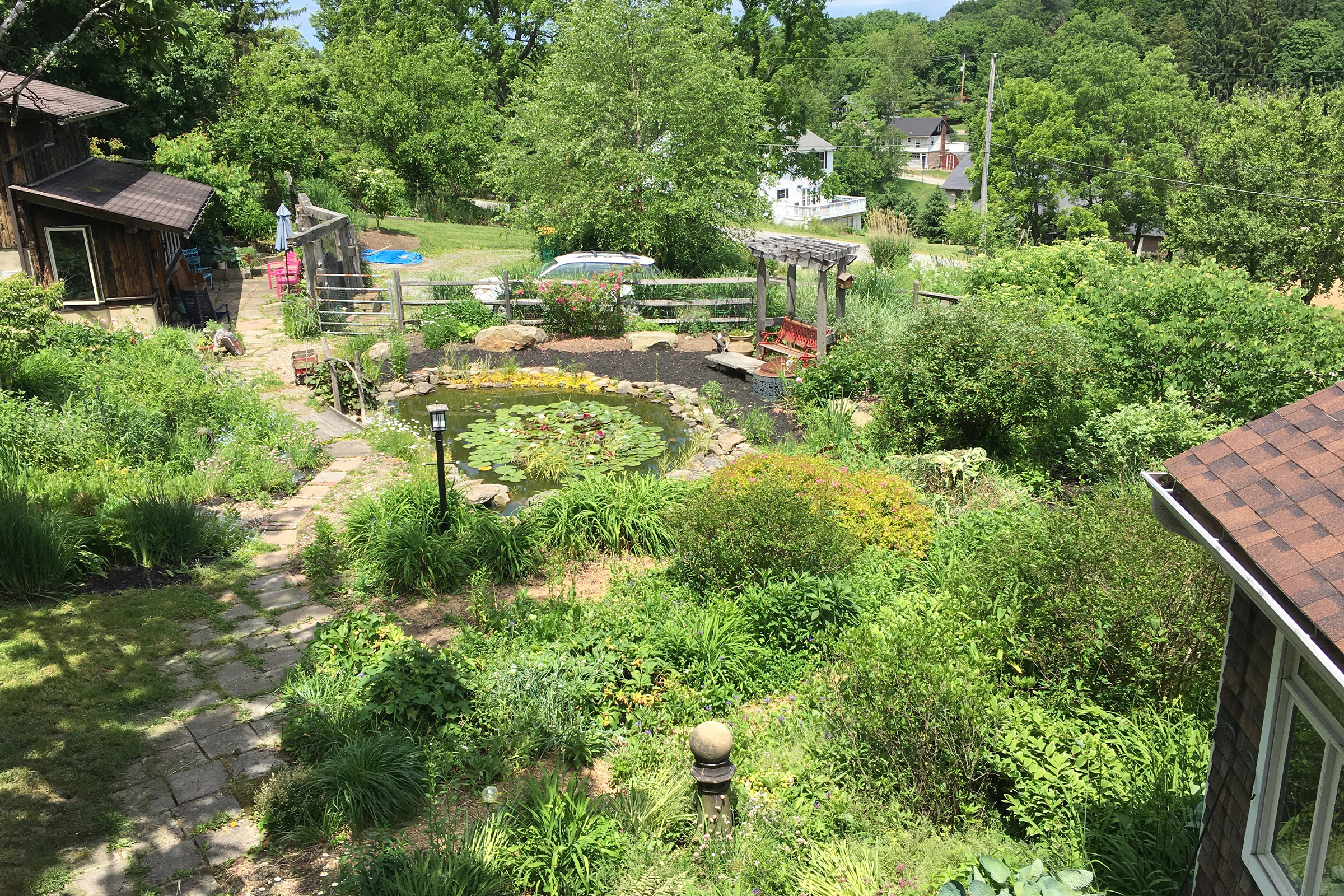
The swales are depressions that move downhill where one overflows into another, then into a third. In this way the water is filtered, stored and slowed allowing time for it to infiltrate to the ground. Debbie describes this area of the garden as being “wild in nature” and the “workhorse of the water management process.” She says that the water from the pond “overflows down a meandering swale planted with native plants and then passes through a cattail filled ditch before eventually emptying into a gravel pit.” In this way all of the rain water that moves across her property is kept on site, nourishing the plants. The entire system works really well. In fact when describing the swales, Debbie said, “Frankly, I don’t think any water ever makes it as far as the gravel pit.”
The garden is more than a place to manage rainwater, it is also a beautiful sanctuary for wildlife. Debbie uses many native plants in her garden and manages it in a way that helps to further support the animals that visit. Debbie talks about the garden maintenance she does by saying that, “Because the garden is meant to support wildlife, I do very little 'work' in it.” She does one big clean up in the spring, cutting back dead perennials and leaving them to breakdown on the hillside. She never waters the perennial gardens as the rainwater system keeps water in the ground. Debbie cares for her garden organically, without ever using pesticides, and manages undesirable or invasive plants by repeatedly cutting them down to starve them of energy.
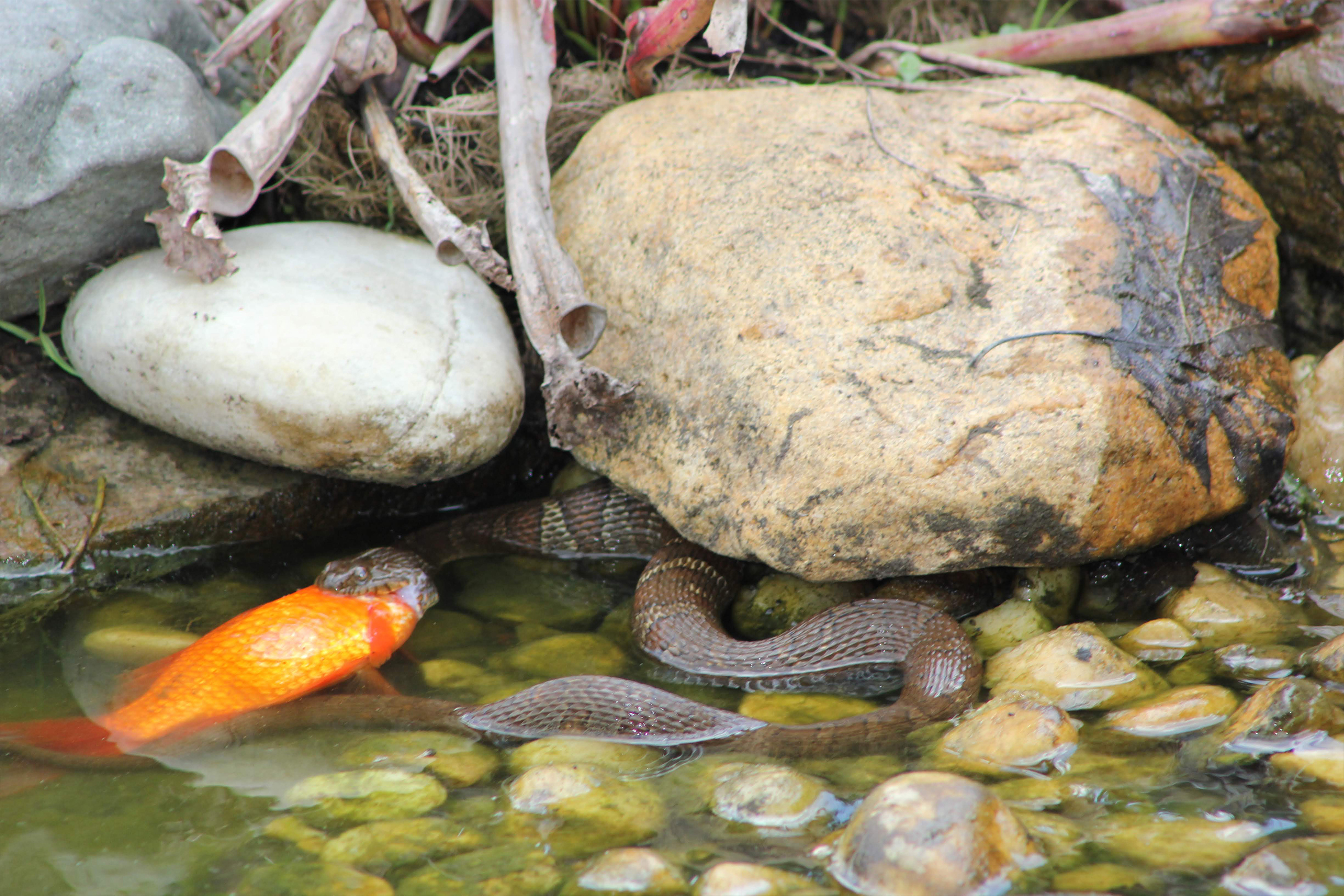
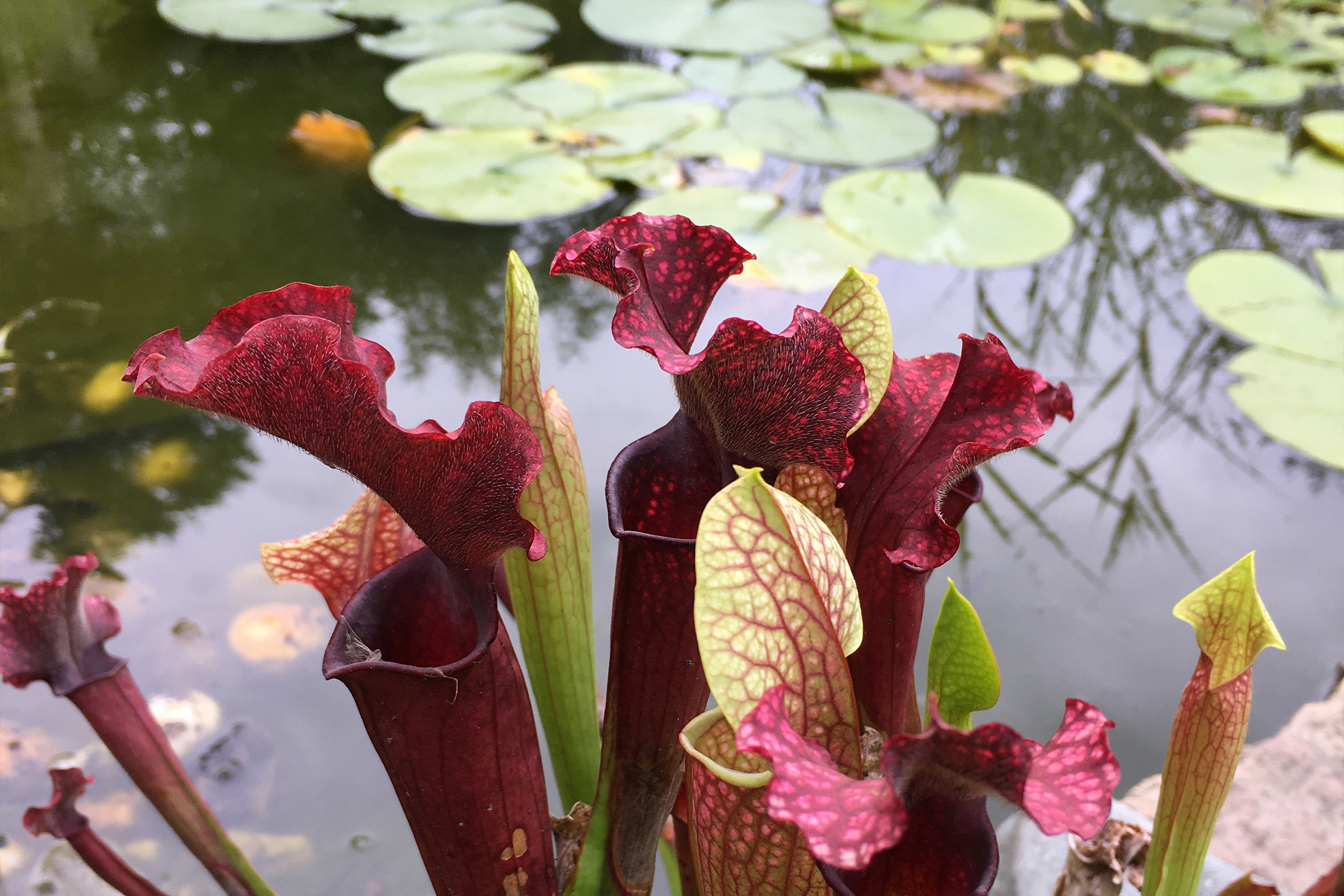
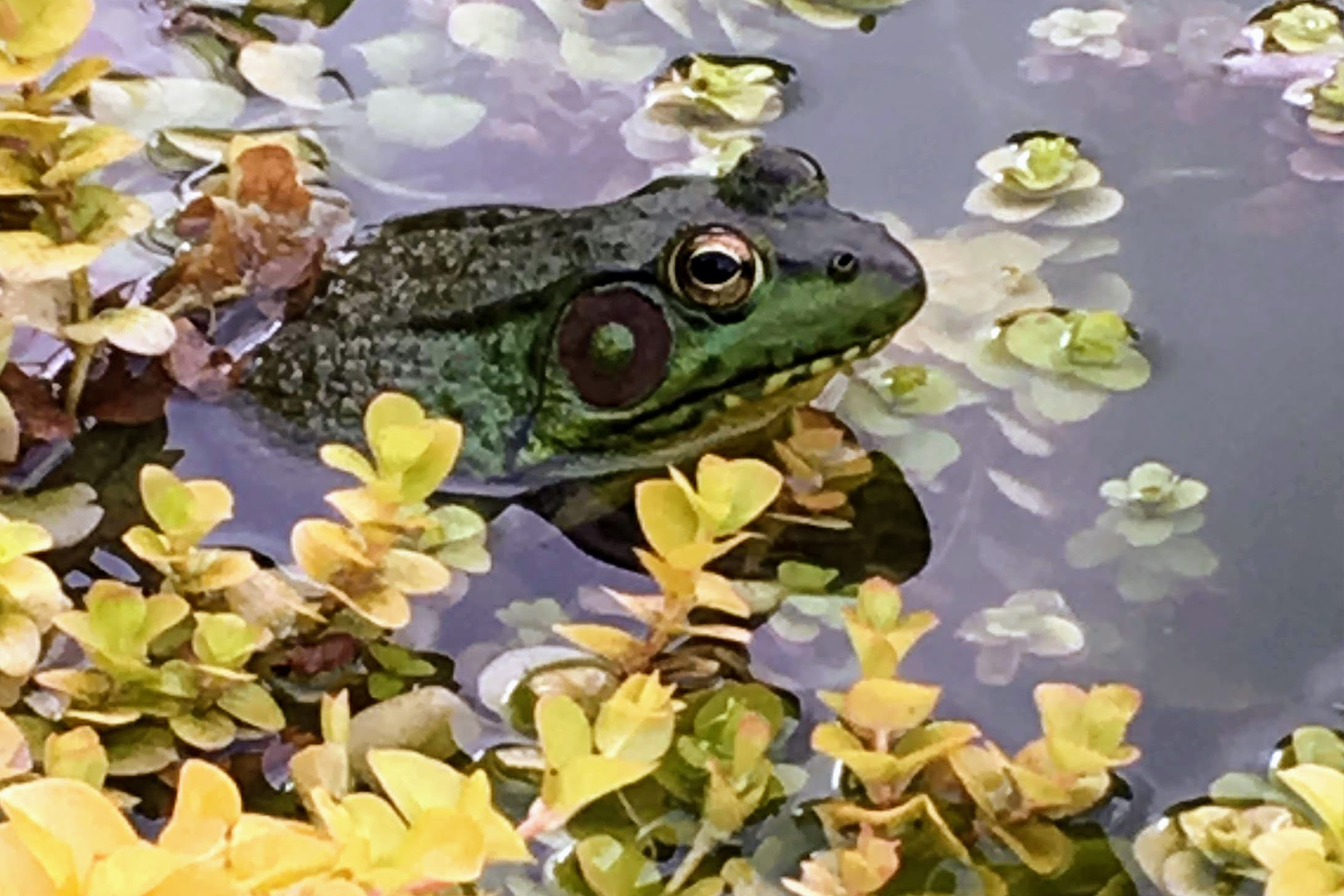
Debbie became interested in sustainable gardening practices when she noticed less bees and butterflies around. She wanted to do something to help support their populations and decided that she could help wildlife while she grew her garden. She made sure that she was using native plants and using good management techniques, like those described above.
Her work paid off. The meadow-like hillside and the pond attract a lot of wildlife including many birds and butterflies. Each year she finds another new animal to enjoy. Her yard provides important habitat to nesting blue birds, herons, frogs, toads, snakes, dragonflies and more. Her favorite part of the garden is the pond. Of the plants in her garden Debbie says, “The things I adore are the amsonia, bee balm, goldenrod, mountain mint, and the elderberry. Then there are surprising things that have found their way into my garden on their own, like the sandbar willow that's growing in the ditch.”
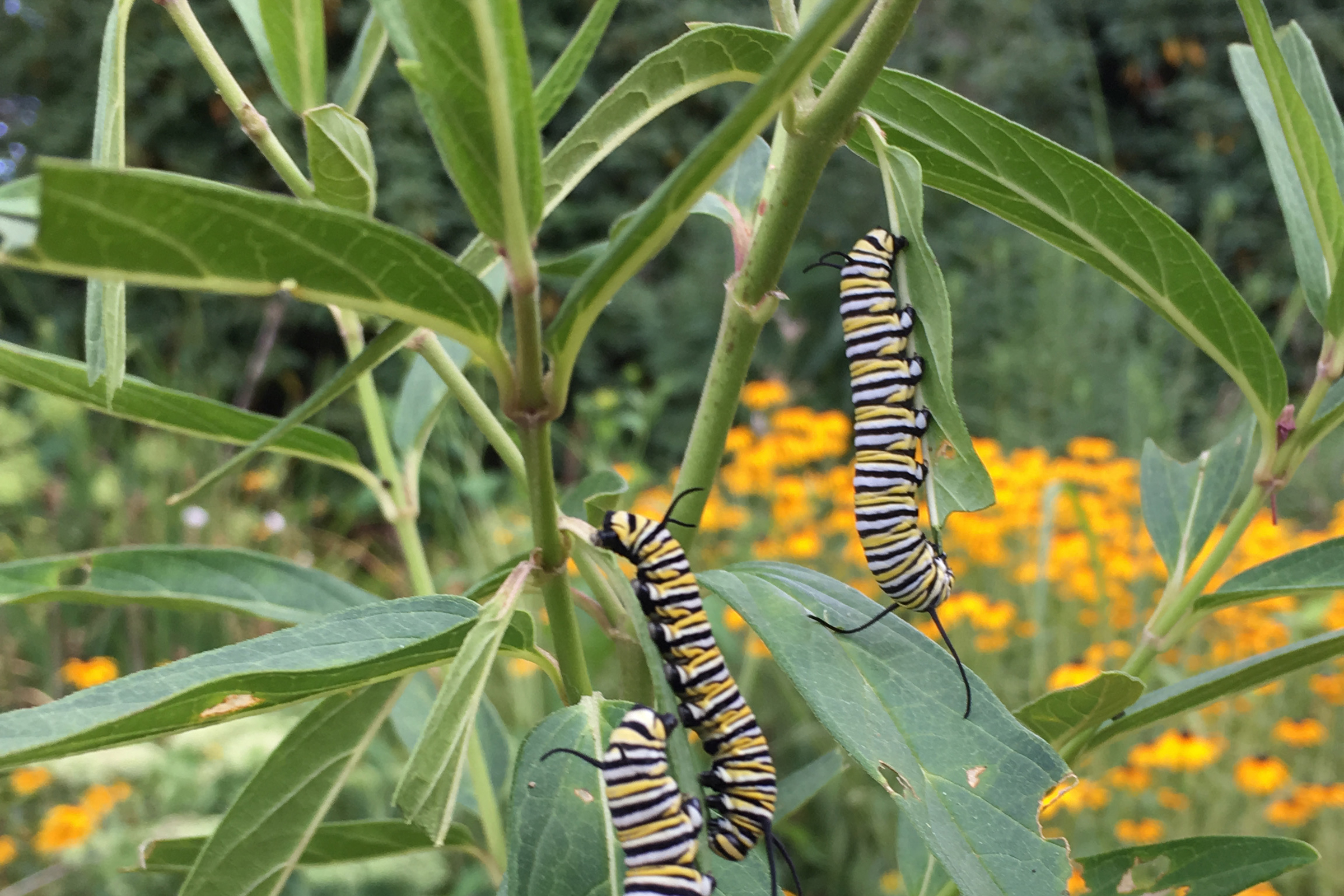
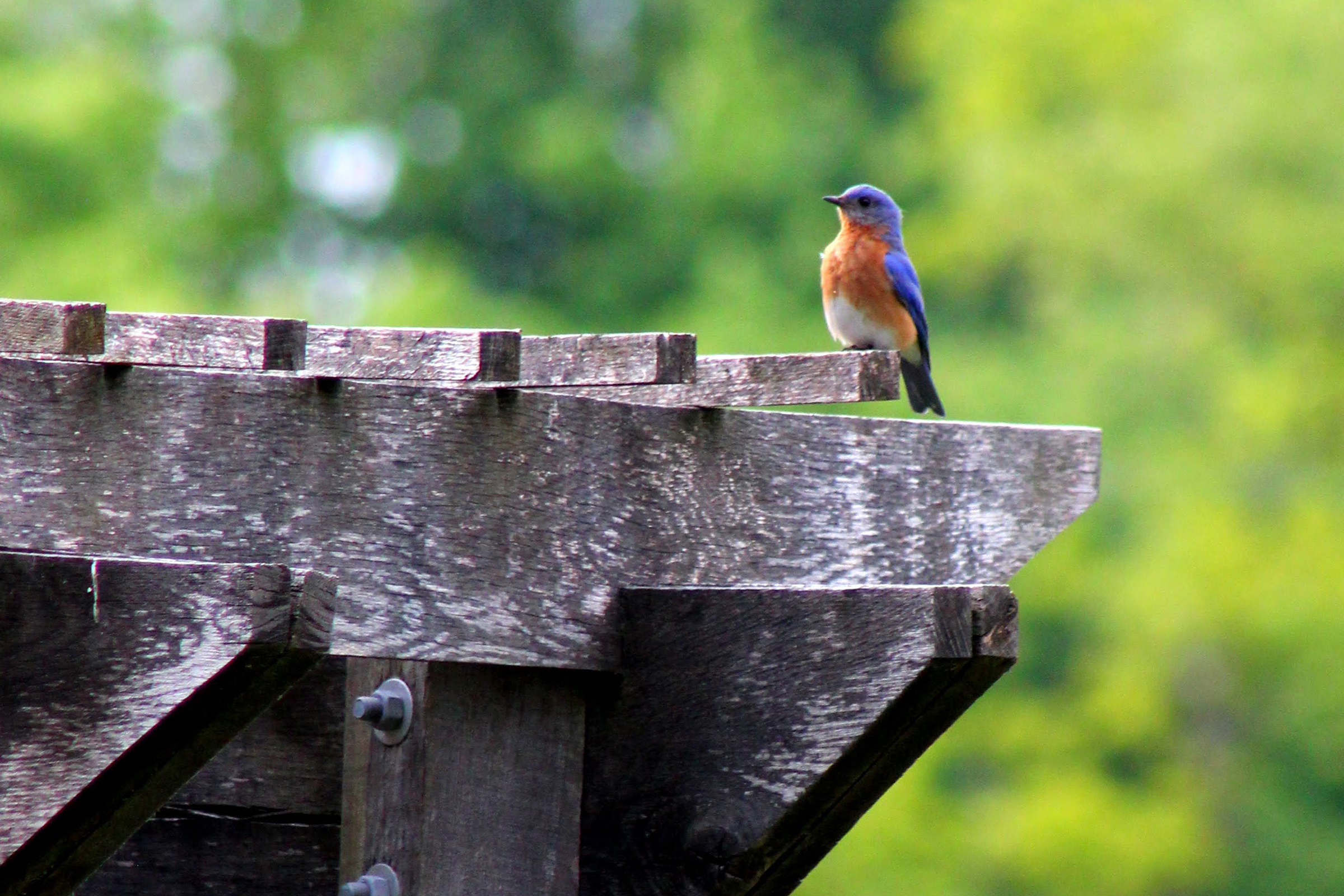
Debbie spends each morning and many evenings enjoying her garden and the wildlife that visit. She says that leaving the garden be a bit wilder is good for both her and the garden.
Photos © Debbie Stember

